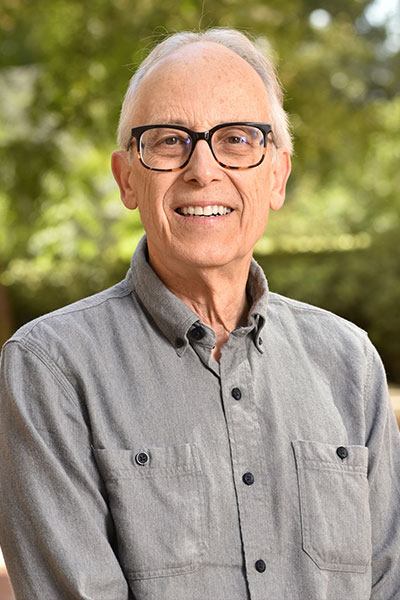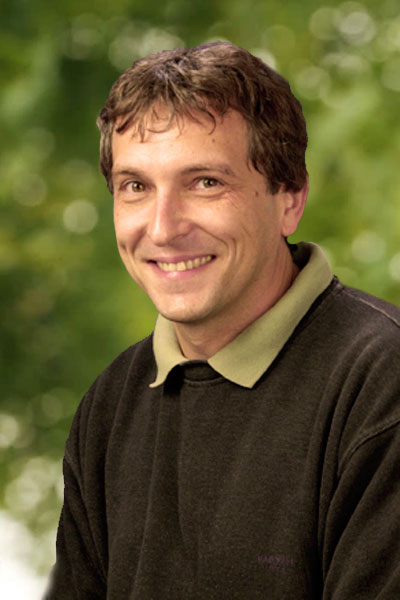Scott Chandler
Biography
I am married to my lovely wife Sonja for 35 years and have two wonderful daughters, Jennifer and Danielle. We love to travel, hike and photograph our journeys. I have a passion for photography and specialize in both landscape and sports genres. I regularly photograph sports events for the UCLA athletic department and have a number of prints on the Walls of UCLA buildings, such as Powell library and the Geology building.
Research Interests
My global interest is in how the central nervous system controls movement. Precisely how we produce coordinated, rhythmical movements such as locomotion, mastication, and respiration is a fundamental problem in neuroscience that is poorly understood. During injury or disease these basic types of movements, which we take for granted, can be compromised. My lab uses animal models to study how rhythmical jaw movements are produced. We use a combination of electrophysiological, molecular, pharmacological techniques in conjunction with computational modeling and bioinformatics to address basic questions about how single and small networks of neurons in the brainstem orchestrate coordinated activity in synapses and ion channels to produce unique discharge patterns that occur during rhythmical movements. We have found that localized groups of neurons within small areas of the brainstem are important for the basic rhythmic component of mastication and that specific ion channels are activated to produce the appropriate discharge patterns reminiscent of masticatory patterns. More recently, the lab has obtained transgenic mice that produce the majority of symptoms of the devastating disease, Amyotrophic Lateral Sclerosis (ALS), otherwise known as Lou Gehrig’s disease. We found that certain ion channels in both sensory and motor neurons are abnormally active prior to the onset of symptoms of the disease. Although these studies are in the early stages, they could provide insight into how the motoneuronal neurodegeneration that is responsible for paralysis and death occur, and will start to identify new molecular targets for development of rational drug therapies to delay motoneuronal degeneration and prolong the life of ALS patients.
Education
B.S., Neurobiology, University of California, Berkeley
Ph.D., Physiology/Neurophysiology, University of California, Los Angeles 1979
Selected Publications
Liu W, Venugopal S, Majid S, Ahn IS, Diamante G, Hong J, Yang X, Chandler SH (2020) ‘Single-cell RNA-seq analysis of the brainstem of mutant SOD1 mice reveals perturbed cell types and pathways of amyotrophic lateral sclerosis.’ Neurobiol Dis, In Press. PMID: 32360664
Seki S, Tanaka S, Yamada S, Tsuji T, Enomoto A, Ono Y, Chandler SH, Kogo M (2020) ‘Neuropeptide Y modulates membrane excitability in neonatal rat mesencephalic V neurons.’ J Neurosci Res, 98 (5): 921-935. PMID: 31957053
Venugopal S, Seki S, Terman DH, Pantazis A, Olcese R, Wiedau-Pazos M, Chandler SH (2019) ‘Resurgent Na+ Current Offers Noise Modulation in Bursting Neurons.’ PLoS Comput Biol, 15 (6): e1007154. PMID: 31226124
Salomon D., Martin-Harris., Mullen B., Odegaard B., ZvinyatskovskiyA., and Chandler S.H, “Brain Literate: Making Neuroscience Accessible to a Wider Audience of Undergraduates”, J. Undergraduate Neurosci. Educ, 13 : 1-9 (2015) .
Masoumi A., Low E., Shoghi T., Chan P., Hsiao CF., Chandler S.H., & Martina Wiedau-Pazos., “Enrichment of human embryonic stem cell derived motor neuron cultures using arabinofuranosyl cytidine”, Future Neurol, 10 : 91-99 (2015) .
Venugopal S., Hsiao CF., Sonoda T., Weidau-Pazos M.,and Chandler S.H., “Homeostatic dysregulation in membrane properties of masticatory motoneurons compared to oculomotor neurons in a mouse model for Amyotrophic Lateral Sclerosis”, J. Neurosci, 35 : 707-720-720 (2015) .
Tsuruyama K, Hsiao CF, Chandler SH, “Participation of a persistent sodium current and calcium-activated nonspecific cationic current to burst generation in trigeminal principal sensory neurons”, J. Neurophysiology, 110 : 1903-1914 (2013) .
Hsiao CF, Kaur G, Vong A, Bawa H, Chandler SH, ” Participation of Kv1 channels in control of membrane excitability and burst generation in mesencephalic V neurons”, J. Neurophysiology, 101 : 1407-1418 (2009) .
Hsiao, C.F., Gougar, K., Asai, J. and Chandler, S.H, ” Intrinsic membrane properties and morphological characteristics of interneurons in the rat supratrigeminal region”, J.Neurosci. Res, 85 : 3673-3686 (2007) .
Enomoto, A., Han, J.M., Hsiao, C.F., Wu, N. and Chandler, S.H., “Participation of sodium currents in burst generation and control of membrane excitability in mesencephalic trigeminal neurons”, J Neurosci, 26 : 3412-3422 (2006) .
Rachelle Crosbie
Rachelle Crosbie
Professor
Department Chair
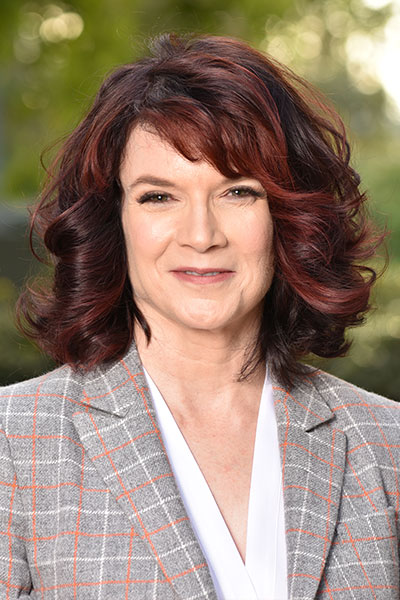
Email: rcrosbie@physci.ucla.edu
Office: 2121 TLSB
Phone: (310) 794-2103
Website: https://crosbie.ibp.ucla.edu/
Biography
Rachelle was raised in the Big Thicket of southeast Texas and spent her childhood in search of crawdads, water moccasins, and cottonmouths near the bayou. At the age of nine, she moved with her family to Saudi Arabia, where she learned to scuba dive, ride a camel, and survive in the Arabian desert. All of these adventures prepared her for a life in academia. During college, a summer internship at M.D. Anderson Cancer Center in Houston sparked her interest in pursuing a career in research. She completed her Ph.D. graduate thesis with Professor Emil Reisler in the Department of Biochemistry at UCLA. During this time, she developed a love of protein biochemistry and an appreciation of the intricate relationship between the structure and function of contractile proteins that drive movement in skeletal muscle. As a graduate student, she was also passionate about education and received departmental awards for research and teaching. She then pursued postdoctoral research training in the laboratory of Professor and HHMI Investigator Kevin P. Campbell at the University of Iowa Carver College of Medicine, during which time she was supported by the Robert Sampson Postdoctoral Fellowship from the Muscular Dystrophy Association. Her research was focused on Duchenne muscular dystrophy, which is the most common of the rare diseases that affect children. During her postdoctoral research, she discovered a muscle protein that is associated with dystrophin and assigned it the name sarcospan based on its multiple sarcolemma-spanning domains. Her lab is now focused on basic and translational research of muscular dystrophies. She maintains her passion for education and teaching. She is a National Academies Education Scholar and was awarded the UCLA campus-wide Chancellor’s Distinguished Teaching Award, the Coalition Duchenne Lotus Award, the Golden Test Tube Award, and the Life Sciences Award for Teaching Innovation. She developed a fully online course on Duchenne muscular dystrophy that is offered at all University of California campuses and beyond. She leads a NIH T32 training grant program that supports graduate students and postdoctoral fellows in muscle laboratories at UCLA. The results from her first education focused research study were recently published (Choe et al., 2019 CBE Life Sci Edu). The article describes a new coding method to determine the student engagement value of asynchronous online lecture videos. A second manuscript that is in preparation is focused on how students experience online courses. When out of the lab, Professor Crosbie enjoys driving her 1968 corvette on the Pacific Coast Highway.
Research Interests
Loss of appropriate connection between the muscle cell membrane and its surrounding extracellular matrix is a critical initiating event in Duchenne muscular dystrophy (DMD), which is an inherited muscle wasting disorder that affects all skeletal and cardiac muscles. In fact, there are more children with this inherited muscle-wasting disorder than with all combined childhood cancers; yet there is no treatment. Whereas survival rates for childhood cancers have increased from 58% in 1975-1977 to 80% in 1996-2003, survival rates for DMD have remained the same, 0%. Thirty percent of the mutations in the dystrophin gene are spontaneous, which means that DMD will always be present in the population. Professor Crosbie’s research group has developed the use of the myofiber’s own compensatory mechanisms as a strategy to ameliorate dystrophic muscle. Such approaches are advantages in that they have the potential to target all DMD cases, regardless of the specific dystrophin mutation. Her lab has discovered that sarcospan, a transmembrane protein, evokes a set of molecular events that, when individually activated in DMD muscle, ameliorate dystrophin-deficient disease including cardiac, respiratory, and skeletal muscle dysfunction. The Crosbie lab has identified new chemical entities (small compounds) that activate sarcospan in DMD muscle cells, which the lab is pursuing as a treatment for DMD. Professor Crosbie’s group has also developed an in vitro platform to investigate the interaction of muscle resident cells with the extracellular matrix as a mechanism to investigate the effect of fibrosis on muscle function in health and disease. Professor Crosbie’s research has been continuously funded by NIH R01 grants, in addition to grants from industry and non-profit organizations.
Education
B.S., Biochemistry, Texas A&M University 1989
Ph.D., Biochemistry, University of California, Los Angeles 1994
Postdoctoral Fellowship, University of Iowa Carver College of Medicine
Selected Publications
Shu C, Kaxon-Rupp AN, Collado JR, Damoiseaux R, Crosbie RH (2019) ‘Development of a high-throughput screen to identify small molecule enhancers of sarcospan for the treatment of Duchenne muscular dystrophy.’ Skelet Muscle, 9 (1): 32. PMID: 31831063.
Choe RC, Scuric Z, Eshkol E, Cruser S, Arndt A, Cox R, Toma SP, Shapiro C, Levis-Fitzgerald M, Barnes G, Crosbie RH (2019) ‘Student Satisfaction and Learning Outcomes in Asynchronous Online Lecture Videos.’ CBE Life Sci Educ, 18 (4): ar55. PMID: 31675279.
Gibbs EM, Barthélémy F, Douine ED, Hardiman NC, Shieh PB, Khanlou N, Crosbie RH, Nelson SF, Miceli MC (2019) ‘Large in-frame 5′ deletions in DMD associated with mild Duchenne muscular dystrophy: Two case reports and a review of the literature.’ Neuromuscul Disord, 29 (11): 863-873. PMID: 31672265.
Parvatiyar MS, Brownstein AJ, Kanashiro-Takeuchi RM, Collado JR, Dieseldorff Jones KM, Gopal J, Hammond KG, Marshall JL, Ferrel A, Beedle AM, Chamberlain JS, Renato Pinto J, Crosbie RH (2019) ‘Stabilization of the cardiac sarcolemma by sarcospan rescues DMD-associated cardiomyopathy.’ JCI Insight, 4 (11): 1-21. PMID: 31039133.
Eric Deeds
Eric Deeds
Professor
Vice Chair, Life Sciences Core
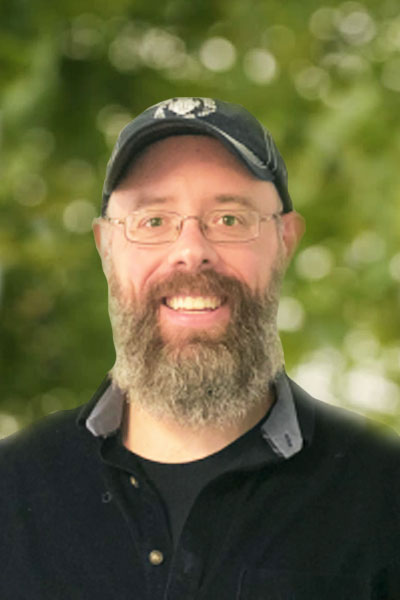
Email: deeds@ucla.edu
Office: 570E Boyer Hall
Phone: (310) 825-1034
Education
B.S., Biochemistry, Case Western Reserve University 2001
B.A., English, Case Western Reserve University 2001
A.M., Biology, Harvard University 2003
Ph.D., Biology, Harvard University 2005
Selected Publications
Vakser, I. A. and Deeds, E. J., “Computational Approaches to Macromolecular Interactions in the Cell”, Curr Opin Struct Biol, 55 : 59-65 (2019) .
Shockley, E. M., Rouzer, C. A., Marnett, L. J., Deeds, E. J. and Lopez, C. F., “Signal integration and information transfer in an allosterically regulated network”, npc Syst Biol Appl, 5 (1): 324-333 (2019) .
Suderman, R. and Deeds, E. J., “Intrinsic limits on information transfer in cellular signaling networks”, Interface Focus, 8 (6): 20180039- (2018) .
Nariya MK, Kim JH, Xiong J, Kleindl PA, Hewarathna A, Fisher AC, Joshi SB, Schneich C, Forrest ML, Middaugh CR, Volkin DB, Deeds EJ, “Comparative Characterization of Crofelemer Samples Using Data Mining and Machine Learning Approaches With Analytical Stability Data Sets”, Journal of pharmaceutical sciences, 106 (11): 3270-3279 (2017) .
Rowland MA, Greenbaum JM, Deeds EJ, “Crosstalk and the evolvability of intracellular communication”, Nature communications, 8 : 16009- (2017) .
Suderman R, Bachman JA, Smith A, Sorger PK, Deeds EJ, “Fundamental trade-offs between information flow in single cells and cellular populations”, Proceedings of the National Academy of Sciences of the United States of America, 114 (22): 5755-5760 (2017) .
Kleindl PA, Xiong J, Hewarathna A, Mozziconacci O, Nariya MK, Fisher AC, Deeds EJ, Joshi SB, Middaugh CR, Schneich C, Volkin DB, Forrest ML, “The Botanical Drug Substance Crofelemer as a Model System for Comparative Characterization of Complex Mixture Drugs”, Journal of pharmaceutical sciences, 106 (11): 3242-3256 (2017) .
Hewarathna A, Mozziconacci O, Nariya MK, Kleindl PA, Xiong J, Fisher AC, Joshi SB, Middaugh CR, Forrest ML, Volkin DB, Deeds EJ, Schneich C, “Chemical Stability of the Botanical Drug Substance Crofelemer: A Model System for Comparative Characterization of Complex Mixture Drugs”, Journal of pharmaceutical sciences, 106 (11): 3257-3269 (2017) .
Nariya MK, Israeli J, Shi JJ, Deeds EJ, “Mathematical Model for Length Control by the Timing of Substrate Switching in the Type III Secretion System”, PLoS computational biology, 12 (4): e1004851- (2016) .
Wani PS, Rowland MA, Ondracek A, Deeds EJ, Roelofs J, “Maturation of the proteasome core particle induces an affinity switch that controls regulatory particle association”, Nature communications, 6 (6384): (2015) .
Gordon Fain
Gordon Fain
Distinguished Professor
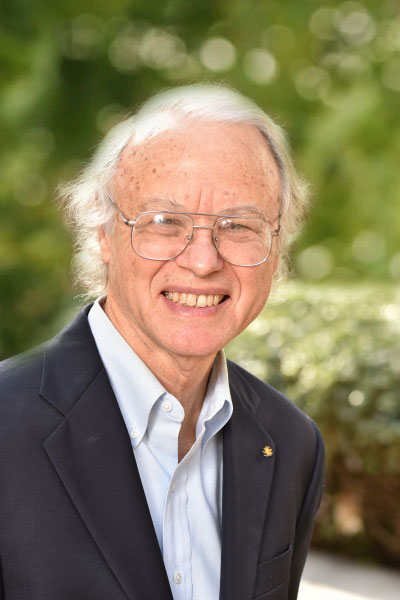
Email: gfain@ucla.edu
Office: A222B, the Jules Stein Eye Institute
Phone: (310) 206-4281
Biography
Gordon Fain got his BA at Stanford in Biology and PhD at Johns Hopkins in Biophysics. After postdocs at Harvard and the École Normale Supérieure in Paris, he came to UCLA in 1975 and remained for his entire career. A Gugenheim fellow, NIH MERIT scholar, and Fellow of AAAS, he retired from active service in 2017 but is still funded by the NIH and continues his research. When he retired, he moved with all his equipment and people into the laboratory of his former graduate student Alapakkam Sampath, who is Professor and Associate Director of the Jules Stein Eye Institute at UCLA. They share students and research personnel and offer a joint program in the physiology and biophysics of the retina.
Research Interests
A vertebrate photoreceptor uses a G-protein receptor (rhodopsin) and a G-protein cascade to produce the electrical response that signals a change in light intensity. Powerful new techniques have made it possible to understand the working of this cascade in extraordinary detail. The reason for this is that practically every protein involved in the cascade in a photoreceptor, from the pigment molecule rhodopsin to the G-protein and channels, but including also a large number of control proteins, are expressed only in the photoreceptors and nowhere else in the body. This makes it possible with genetic techniques to create mice in which these proteins have been knocked out, over or under expressed, or replaced with proteins of modified structure. We use electrical recording to study the effects of such genetic alterations on the light responses of mouse rods and cones, in order to understand the role of these proteins in the visual cascade. We are especially interested in modulatory enzymes and their function in light and dark adaptation. We also have a long-standing interest in mechanisms of photoreceptor degeneration in genetically inherited disease.
Education
B.S., Biology, Stanford University 1968
Ph.D., Biophysics, Johns Hopkins University 1973
Selected Publications
Reingruber, J., N.T. Ingram, Griffis, K.G., and G.L. Fain. 2020. A kinetic analysis of mouse rod and cone photoreceptor responses. Journal of Physiology, in press.
Ellis, E.M., R. Frederiksen, A. Morshedian, G. L. Fain, and A.P. Sampath. Separate ON and OFF pathways in vertebrate vision first arose during the Cambrian. Current Biology, in press.
Ingram, N.T., A.P. Sampath, and G.L. Fain. 2020. Membrane conductances of mouse cone photoreceptors. Journal of General Physiology. Mar 2;152(3). PMID: 31986199. pii: e201912520. doi: 10.1085/jgp.201912520.
Fain, G.L. 2019. Sensory Transduction (second edition). Oxford University Press, Oxford.
Morshedian, A., J.J. Kaylor, S.Y. Ng, A. Tsan, R. Frederiksen, T. Xu, L. Yuan, A.P. Sampath, R.A. Radu, G.L. Fain, and G.H. Travis. 2019. Light-Driven Regeneration of Cone Visual Pigments through a Mechanism Involving RGR Opsin in Muller Glial Cells. Neuron. 102:1172-1183 e1175. PMID: 31056353. doi: 10.1016/j.neuron.2019.04.004.
Ingram, N.T., A.P. Sampath, and G.L. Fain. 2019. Voltage-clamp recordings of light responses from wild-type and mutant mouse cone photoreceptors. Journal of General Physiology. 151:1287-1299. PMID: 31562185. doi: 10.1085/jgp.201912419.
Wang, T., J. Reingruber, M.L. Woodruff, A. Majumder, A. Camarena, N.O. Artemyev, G.L. Fain, and J. Chen. 2018. The PDE6 mutation in the rd10 retinal degeneration mouse model causes protein mislocalization and instability and promotes cell death through increased ion influx. J Biol Chem. 293:15332-15346. PMID: 30126843. doi: 10.1074/jbc.RA118.004459
Fain G, Sampath AP, “Rod and cone interactions in the retina”, F1000Research, 7 : (2018) .
Morshedian A, Woodruff ML, Fain GL, “Role of recoverin in rod photoreceptor light adaptation”, The Journal of physiology, 596 (8): 1513-1526 (2018) .
Morshedian A, Fain GL, “Light adaptation and the evolution of vertebrate photoreceptors”, The Journal of physiology, 595 (14): 4947-4960 (2017) .
Kaylor JJ, Xu T, Ingram NT, Tsan A, Hakobyan H, Fain GL, Travis GH, “Blue light regenerates functional visual pigments in mammals through a retinyl-phospholipid intermediate”, Nature communications, 8 (1): 16- (2017) .
Morshedian A, Fain GL, “The evolution of rod photoreceptors”, Philosophical transactions of the Royal Society of London. Series B, Biological sciences, 372 (1717): (2017) .
Ingram NT, Sampath AP, Fain GL, “Why are rods more sensitive than cones?”, The Journal of physiology, 594 (19): 5415-26 (2016) .
Reingruber J, Holcman D, Fain GL, “How rods respond to single photons: Key adaptations of a G-protein cascade that enable vision at the physical limit of perception”, BioEssays : news and reviews in molecular, cellular and developmental biology, 37 (11): 1243-52 (2015) .
Mark Frye
Mark Frye
Professor
Director of Molecular, Cellular and Integrative Physiology (MCIP) Interdepartmental Ph.D. Program
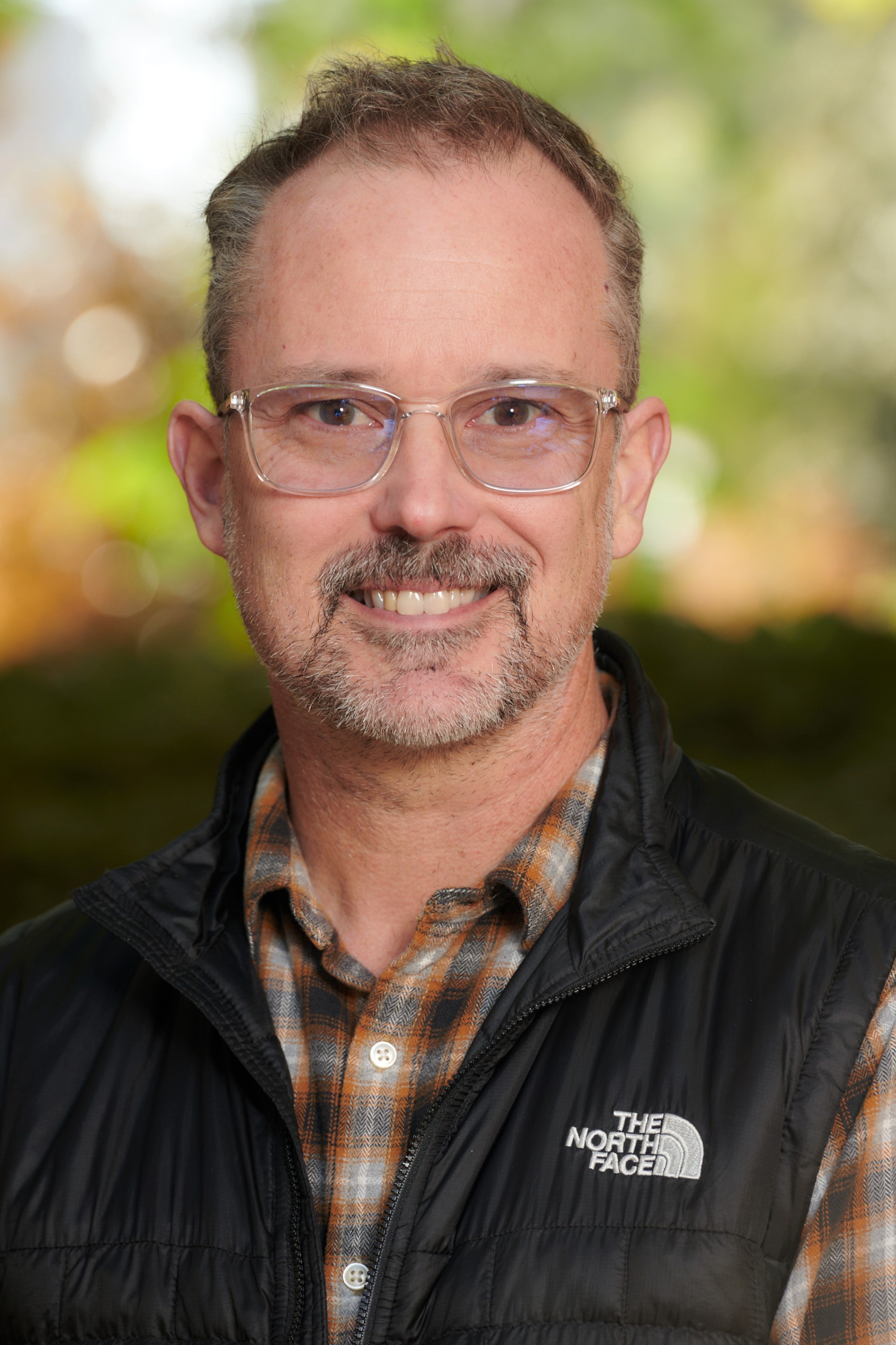
Email: frye@ucla.edu
Office: 2014 TLSB
Phone: (310) 825-5360
Website: https://sites.lifesci.ucla.edu/ibp-frye/
Biography
Professor Frye grew up in upstate New York, and after completing a BA in psychology at SUNY Oneonta, he expanded his studies of neuroscience at Union College, where he received his MS for research on the cellular neurophysiology of dragonfly vision with Robert Olberg. He moved to University of Washington to complete a PhD on the sensory biomechanics of flight control in the hawkmoth under the mentorship of Tom Daniel and Jim Truman. His postdoctoral training was with Michael Dickinson at UC Berkeley and Caltech studying multimodal sensory control of flight behavior in Drosophila. In his own lab he uses virtual reality behavior, neurogenetics, and live brain imaging to understand how sensory signals are encoded, fused across modalities, and transformed into the motor control of complex behavior.
Research Interests
General introduction How are flexible and robust animal behaviors orchestrated by the nervous system? Different forms of this general question have occupied neuroscientists for decades. Great strides have been made toward describing the elements of nervous system development, structure, and function. Our next challenge is to examine how behavior emerges from the interactions among genetic, cellular, cell-system, and organ-system levels of organization. My laboratory studies these interactions in a powerful model system ? the fruit fly Drosophila melanogaster. Whereas research with Drosophila is most often focused within the molecular-genetic spectrum of modern biology, this animal also shows remarkable behavioral performance, making its living navigating vast distances through complex visual landscapes in search of the source of an attractive odor. A fly?s sophisticated navigation capabilities emerge from the fusion of multiple sensory modalities and transformation of a robust motor code. By combining the rapidly expanding toolkit of fruit fly molecular genetics with live imaging and ‘virtual reality’ behavioral techniques, we hope to reveal the functional mechanisms and structural circuits with which the fly brain coordinates the biomechanics and dynamics of complex sensory behavior. The results of this cross-disciplinary approach could have broad impact on our understanding of the general principles of sensory fusion and sensory-motor integration common among animal taxa, and also motivate specialized technical advances in bio-inspired robotic devices.
Education
M.S., Neuroscience, Union College 1992
Ph.D., Zoology, University of Washington 2000
Selected Publications
Keleş MF, Hardcastle BJ, Städele C, Xiao Q, Frye MA. Inhibitory Interactions
and Columnar Inputs to an Object Motion Detector in Drosophila. Cell Reports, (7):2115-2124 (2020).
Cheng KY, Frye MA. Neuromodulation of insect motion vision. Journal of Comparative Physiology A. 206(2):125-137 (2020).
Mongeau JM, Frye MA, “Flies spatio-temporally integrate visual signals to control saccades”, Current Biology, 27 (9): 2901-2914 (2017) .
Aptekar JW, Keles MF, Lu PM, Zolotova NM, Frye MA, “Neurons forming optic glomeruli compute figure-ground discriminations”, J Neuroscience, 35 : 7587-7599 (2015) .
Frye MA, “Quick guide: Elementary motion detectors”, Curr Biol, 25 : R215-217 (2015) .
Wasserman SW, Aptekar JW, Lu PM, Nguyen J, Wang AL, Keles MF, Grygoruk A, Krantz DE, Larsen C, Frye MA, “Olfactory neuromodulation of motion vision circuitry in Drosophila”, Curr Biol, 25 : 467-472 (2015) .
David Glanzman
David Glanzman
Distinguished Professor
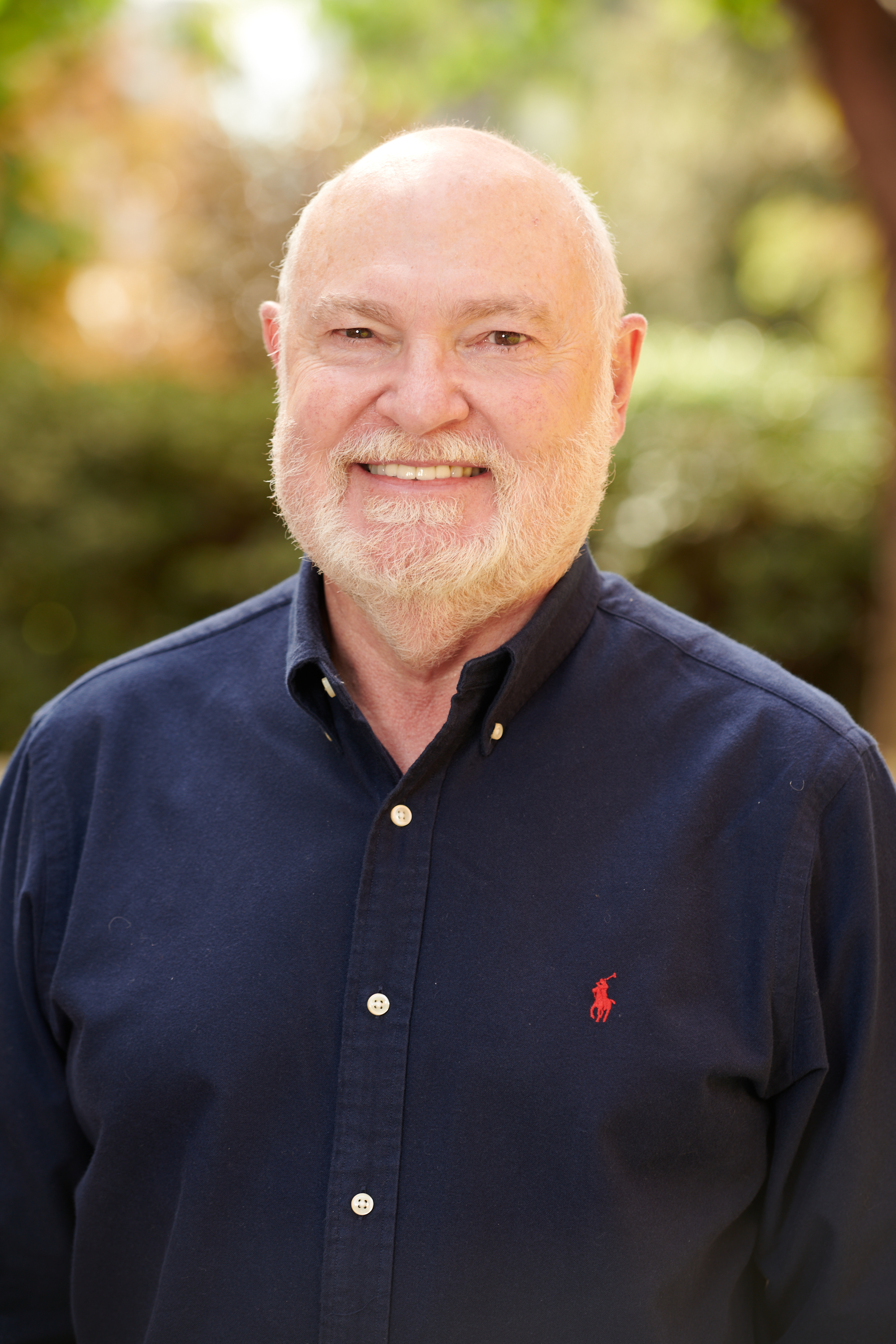
Email: glanzman@ucla.edu
Office: 2357C Gonda (Goldschmied) Center
Phone: (310) 206-9972
Biography
I began my academic career as an English and film major at Oberlin College. After two years of college, I decided to explore the world, and spent a year-and-a-half living in New York City’s East Village, working as a silkscreen printer and apprentice film editor. My curiosity about the world somewhat satisfied, I decided to return to college; I eventually graduated from Indiana University with a B.A. in psychology. I then obtained a Ph.D. in experimental psychology from Stanford University, and afterwards did postdoctoral stints in the laboratories of Frank Krasne at UCLA and Eric Kandel at the Howard Hughes Medical Institute at Columbia University. It was in Kandel’s laboratory that I began my work on learning and memory in Aplysia (see below). In 1990 I was hired as an Assistant Professor in the Department of Integrative Biology & Physiology (formerly Physiological Science), where I am now a Professor. In addition, I am also a Professor in the Department of Neurobiology in the David Geffen School of Medicine.
Research Interests
My laboratory is interested in the cell biology of learning and memory in simple organisms. In our research we use two animals, the marine snail Aplysia californica, and the zebrafish (Danio rerio).
Work on Aplysia: This invertebrate has a comparatively simple nervous system (~ 20,000 neurons) that provides a valuable experimental model for understanding the cellular mechanisms that underlie simple forms of learning, such as habituation, sensitization, and classical conditioning. Another experimental advantage of Aplysia is that sensory and motor neurons that mediate specific reflexes of the animal can be placed into dissociated cell culture where they will reform their synaptic connections. These in vitro sensorimotor synapses are extremely useful for cellular and molecular studies of short- and long-term learning-related synaptic plasticity. Currently, my laboratory is investigating the mechanisms that underlie the persistence of memory: How are memories maintained in our brains over long periods of time? Recently, we have found evidence that RNA-induced nuclear changes, particularly epigenetic changes, play a critical role in memory storage. Specifically, we have found that a long-term memory can be reinstated after manipulations that erase the behavioral and synaptic memory expressions of the memory; by contrast, the memory cannot be reinstated after its disruption by inhibition of an epigenetic process, DNA methylation. We have also found that long-term memory can be transferred from trained to naive, untrained snails if RNA extracted from the nervous systems of sensitization-trained snails is injected into untrained snails. By contrast, RNA from untrained donor snails does not induce sensitization when injected into untrained recipients. These results challenge the synaptic plasticity model of memory.
Work on the zebrafish: The zebrafish has significant advantages for genetic and molecular studies of behavior, including studies of learning and memory. The zebrafish is amenable to both forwards and reverse genetics. Furthermore, although it is a vertebrate with a complex vertebrate nervous system, it possesses reflexive behaviors that are mediated by relatively simple neural circuits in the spinal cord and brainstem. Finally, zebrafish larvae are transparent, which facilitates the use of optogenetics and advanced imaging techniques to study learning-related neural activity within the intact animal. We study the neural basis of nonassociative learning and memory in zebrafish larvae. In addition, we are investigating olfactory-based associative learning in these organisms.
Education
B.A., Psychology, Indiana University Bloomington 1973
Ph.D., Psychology, Stanford University 1980
Selected Publications
Abraham WC, Jones OD, Glanzman DL (2019) ‘Is plasticity of synapses the mechanism of long-term memory storage?’ NPJ Sci Learn, 4 (): 9. PMID: 31285847
Bedecarrats, A. Chen, S. Pearce, K. Cai, D. Glanzman, D. L., “RNA from trained Aplysia can induce an epigenetic engram for long-term sensitization in untrained Aplysia”, eNeuro, 5 (3): (2018)
Pearce, K. Cai, D. Roberts, A. C. Glanzman, D. L., “Role of protein synthesis and DNA methylation in the consolidation and maintenance of long-term memory in Aplysia”, eLife, 6 : (2017)
Chen, S., Cai, D., Pearce, K., Sun, P.Y., Roberts, A.C., Glanzman, D.L.,, “Reinstatement of long-term memory following erasure of its behavioral and synaptic expression in Aplysia”, eLife, (2014)
Roberts, A.C., Bill, B.R., and Glanzman, D.L., “Learning and memory in zebrafish larvae”, Front. Neural Circuits, (2013)
Crystal, J.D., and Glanzman, D.L., “A biological perspective on memory”, Current Biology, 23 (17): R728-R731 (2013)
Press and Media
Interesting discussion of our recent eLife paper in Discover: http://blogs.discovermagazine.com/neuroskeptic/2014/12/27/synapse-memory-doctrine-threatened/#.VNAEAUKBujA
Another article about our eLife paper in Scientific American: http://www.nature.com/scientificamerican/journal/v312/n4/pdf/scientificamerican0415-14.pdf
Article on my research in The Huffington Post: http://www.huffingtonpost.com/2014/12/23/neuroscience-memory-_n_6366588.html
TEDx talk on long-term memory: https://www.youtube.com/watch?v=mLp6PUPqscs
NSN Short A Memorable Snail NOVA Vodcast published 08-21-2009 13:00:00
Video interview on learning and consciousness (scroll down for David Glanzman video)
Audio interview in The DNA Files show “Minding the Brain”
Interview in the online news source “The Mark” (May 19, 2011): http://www.themarknews.com/articles/5222-eternal-sunshine-is-just-around-the-corner?page=1
Article on my research in the May 10, 2011, issue of “The Atlantic”: http://www.theatlantic.com/life/archive/2011/05/even-if-we-could-erase-bad-memories-should-we/238444/
Fernando Gomez-Pinilla
Fernando Gomez-Pinilla
Professor in Residence
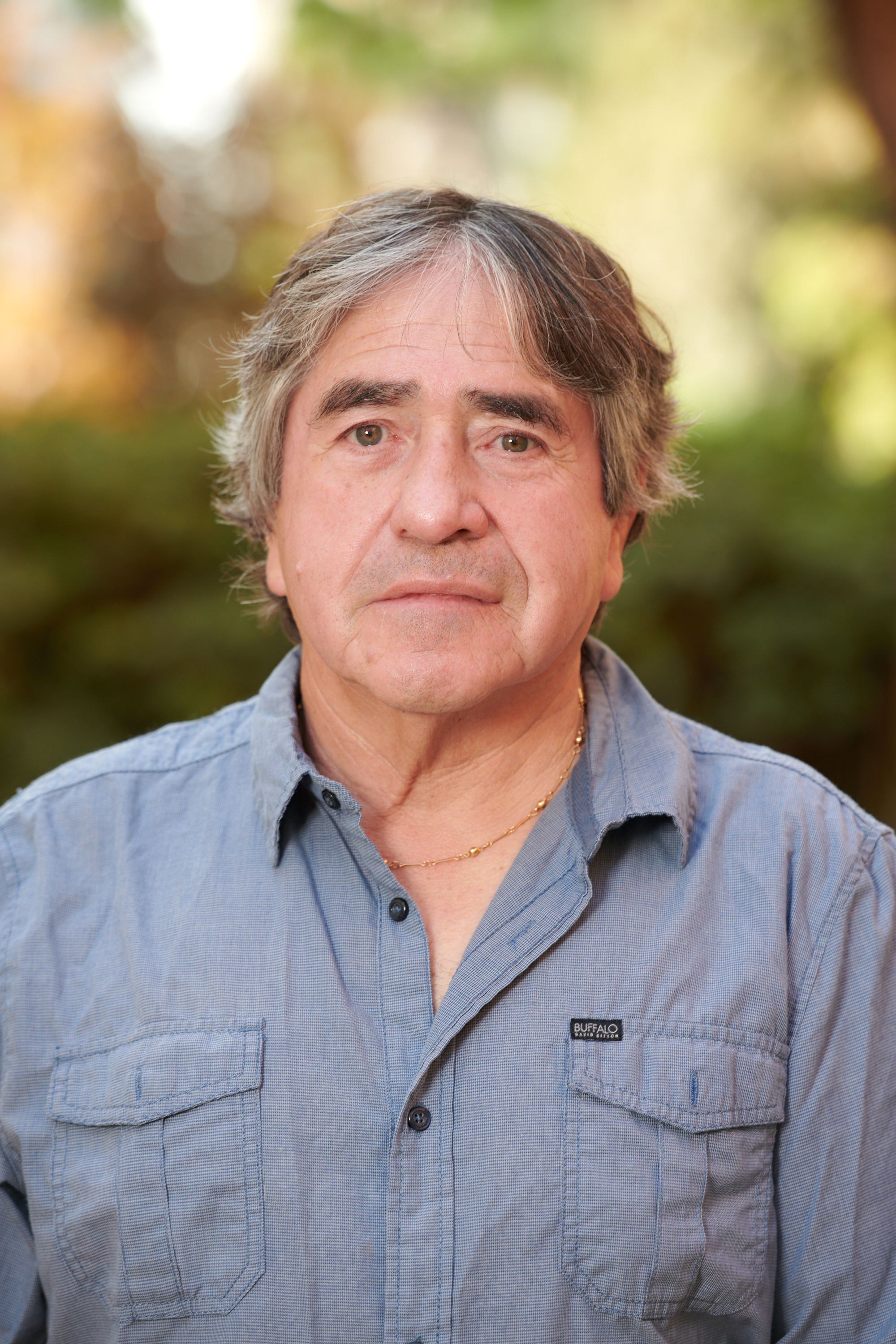
Email: fgomezpi@ucla.edu
Office: 1814 LS
Phone: (310) 206-9693
Website: http://www.physci.ucla.edu/research/GomezPinilla/
Research Interests
Role of Trophic Factors on Activity-dependent Plasticity We are interested on the mechanisms by which environmental factors affect neuronal health. We have found that trophic factors endogenous to the brain and spinal cord can be induced by the practice of select behaviors. We have recently reported that physical activity, learning, and nutritional factors control neurotrophins in the brain. These findings opened the exciting possibility that regulation of trophic factors by behavior can be a pivotal mechanism by which specific experiences can impact the structure and function of the CNS. It may account for the improvement of CNS function after trauma provided by rehabilitative therapies. On the contrary, it may explain the decay in function in aging or degenerative diseases following a lack of stimulation. These two avenues provide direction for my research program: 1) How trophic factors induced by activity can help functional recovery following brain and spinal cord trauma. We are using several exercise models to boost the production of trophic factors in the brain and spinal cord. Our goal is to provide critical information to guide the design of behavioral therapies for the reduction of the severity of insult or disease, and to increase CNS function. 2) We are evaluating the effects of lifestyle on trophic factor production, with resulting effects on circuit remodeling, synaptic function, and cognition. We believe that changes in trophic factor as a result of select experiences can affect neuronal health with profound consequences for cognitive function.
Education
B.A., University of Chile 1977
M.S., Neurobiology, University of Chile 1979
Ph.D., Anatomy & Cell Biology, University of California, Los Angeles 1986
Selected Publications
Molteni R, Wu A, Vaynman S, Ying Z, Barnard RJ, Gomez-Pinilla F., “Exercise reverses the harmful effects of consumption of a high-fat diet on synaptic and behavioral plasticity associated to the action of brain-derived neurotrophic factor”, Neuroscience, 123(2) : 429-40 (2004) .
Wu A, Ying Z, Gomez-Pinilla F., “The interplay between oxidative stress and brain-derived neurotrophic factor modulates the outcome of a saturated fat diet on synaptic plasticity and cognition”, Eur J Neurosci, 19(7): : 1699-707 (2004) .
Vaynman S, Ying Z, Gomez-Pinilla F., “Exercise induces BDNF and synapsin I to specific hippocampal subfields”, J Neurosci Res, 76(3): : 356-62 (2004) .
Griesbach GS, Hovda DA, Molteni R, Wu A, Gomez-Pinilla F., “Voluntary exercise following traumatic brain injury: brain-derived neurotrophic factor upregulation and recovery of function”, Neuroscience, 125(1) : 129-39 (2004) .
Hutchinson KJ, Gomez-Pinilla F, Crowe MJ, Ying Z, Basso DM., “Three exercise paradigms differentially improve sensory recovery after spinal cord contusion in rats”, Brain, 127(Pt 6): : 1403-14 (2004) .
Molteni R, Zheng JQ, Ying Z, Gomez-Pinilla F, Twiss JL., “Voluntary exercise increases axonal regeneration from sensory neurons”, Proc Natl Acad Sci U S A, 101(22) : :8473-8 (2004) .
Ying Z, Roy RR, Edgerton VR, Gomez-Pinilla F., “Voluntary exercise increases neurotrophin-3 and its receptor TrkC in the spinal cord”, Brain Res, 987(1) : 93-9 (2003) .
Vaynman S, Ying Z, Gomez-Pinilla F., “Interplay between brain-derived neurotrophic factor and signal transduction modulators in the regulation of the effects of exercise on synaptic-plasticity”, Neuroscience, 122(3) : 647-57 (2003) .
Gomez-Pinilla F, Ying Z, Roy RR, Molteni R, Edgerton VR., “Voluntary exercise induces a BDNF-mediated mechanism that promotes neuroplasticity”, J Neurophysiol, 88(5) : 2187-95 (2002) .
Molteni, Ying, Z., and Gomez-Pinilla, F., “Differential expression of plasticity-related genes in the rat hippocampus after voluntary wheel running”, Eur. J. Neurosci, 16 (6) : 1107-1124 (2002) .
Elaine Hsiao
Elaine Hsiao
Associate Professor
De Logi Endowed Chair in Biological Sciences
Vice Chair of Postdoctoral Affairs
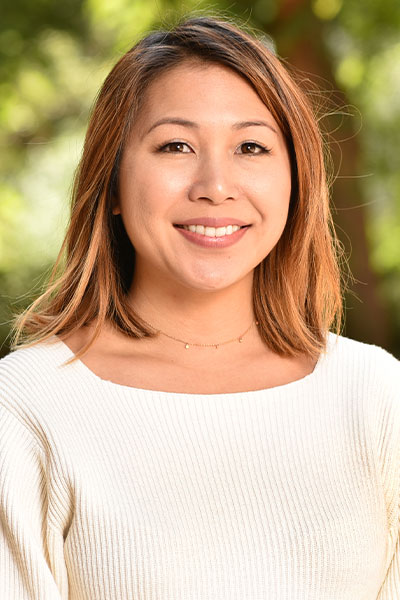
Email: ehsiao@g.ucla.edu
Office: 3825A MSB
Phone: (310) 825-2297
Website: http://hsiao.science/
Biography
Elaine is an Assistant Professor at UCLA, where she is interested in all things microbial, neural and immune. She completed her B.S. in Microbiology, Immunology and Molecular Genetics at UCLA, which sparked her love for molecular biology and bacteria. She went on to complete her Ph.D. in Neurobiology at Caltech, where she studied the neurobiological bases of autism and schizophrenia, with a focus on maternal effects on fetal development, and neuroimmune and microbial contributions to behavioral disorders. Inspired by the amazing and complex interactions between body systems, the Hsiao laboratory is investigating how “peripheral” changes in the immune system and resident microbiota impact the nervous system.
Research Interests
The gut microbiota is emerging as an important modulator of brain function and behavior, as several recent discoveries reveal substantial effects of the microbiome on neurophysiology, neurogenesis, blood brain barrier permeability, neuroimmunity, brain gene expression and animal behavior. Despite these findings supporting a “microbiome-gut-brain axis”, the molecular and cellular mechanisms that underlie interactions between the gut microbiota and brain remain poorly understood. To uncover these, the Hsiao laboratory is mining the human microbiota for microbial modulators of host neuroactive molecules, investigating the impact of microbiota-immune system interactions on neurodevelopment and examining the microbiome as an interface between gene-environment interactions in neurological diseases. We aim to dissect biological circuits for communication between the gut microbiota and nervous system, toward understanding fundamental biological pathways that influence brain and behavior. Situated at the interface of neurobiology, immunology and microbiology, we are using integrative systems approaches to study fundamental questions in biology: What are the effects of the microbiota on the nervous system? How do resident microbes communicate with the nervous system? Which individual species or communities confer particular functional effects? How do microbe-nervous system interactions impact health and disease? What, if any, are the potential evolutionary benefits for microbes to interact with the nervous system? Can rational modification of the microbiota be used to treat symptoms of neurological diseases?
Education
B.S., Microbiology, Immunology & Molecular Genetics, University of California, Los Angeles 2006
Ph.D., Neurobiology, California Institute of Technology 2012
Selected Publications
Lynch JB, Hsiao EY (2019) ‘Microbiomes as sources of emergent host phenotypes.’ Science, 365 (6460): 1405-1409. PMID: 31604267
Fung TC, Vuong HE, Luna CDG, Pronovost GN, Aleksandrova AA, Riley NG, Vavilina A, McGinn J, Rendon T, Forrest LR, Hsiao EY (2019) ‘Intestinal serotonin and fluoxetine exposure modulate bacterial colonization in the gut.’ Nat Microbiol, 4 (12): 2064-2073. PMID: 31477894
Lum GR, Olson CA, Hsiao EY (2020) ‘Emerging roles for the intestinal microbiome in epilepsy.’ Neurobiol Dis, 135 (): 104576. PMID: 31445165
Pronovost GN, Hsiao EY (2019) ‘Perinatal Interactions between the Microbiome, Immunity, and Neurodevelopment.’ Immunity, 50 (1): 18-36. PMID: 30650376
Hsiao E. Y., “The neuroimmune collective, in “Voices: The Next Quarter Century””, Immunity, 50 : 769-777 (2019) .
Olson C. A., Vuong H. E., Yano J. M., Liang Q. Y., Nusbaum D. J., Hsiao E. Y., “The gut microbiota mediates the anti-seizure effects of the ketogenic diet”, Cell, 173 : 1728-1741 (2018) .
Hsiao EY (2018) Decoding states and contexts, in “Setting the Stage for the Next Generation of Neuroscience”. Neuron. 99:11-12. PMID: 30001505.
Fung TC, Olson CA, Hsiao EY (2017) ‘Interactions between the microbiota, immune and nervous systems in health and disease.’ Nat Neurosci, 20 (2): 145-155. PMID: 28092661
Yano JM, Yu K, Donaldson GP, Shastri GG, Ann P, Ma L, Nagler CR, Ismagilov RF, Mazmanian SK, Hsiao EY (2015) ‘Indigenous bacteria from the gut microbiota regulate host serotonin biosynthesis.’ Cell, 161 (2): 264-76. PMID: 25860609
Walter Metzner
Research Interests
Sensory processing/motor control, especially auditory feedback control of vocalization; Behavioral Neuroscience (Neuroethology)
Education
B.S., University of Erlangen, Germany 1981
M.S., Zoology, University of Munich/Germany Department of Zoology 1984
Ph.D., Zoology, University of Munich/Germany Department of Zoology 1989
Ketema Paul
Ketema Paul
Professor
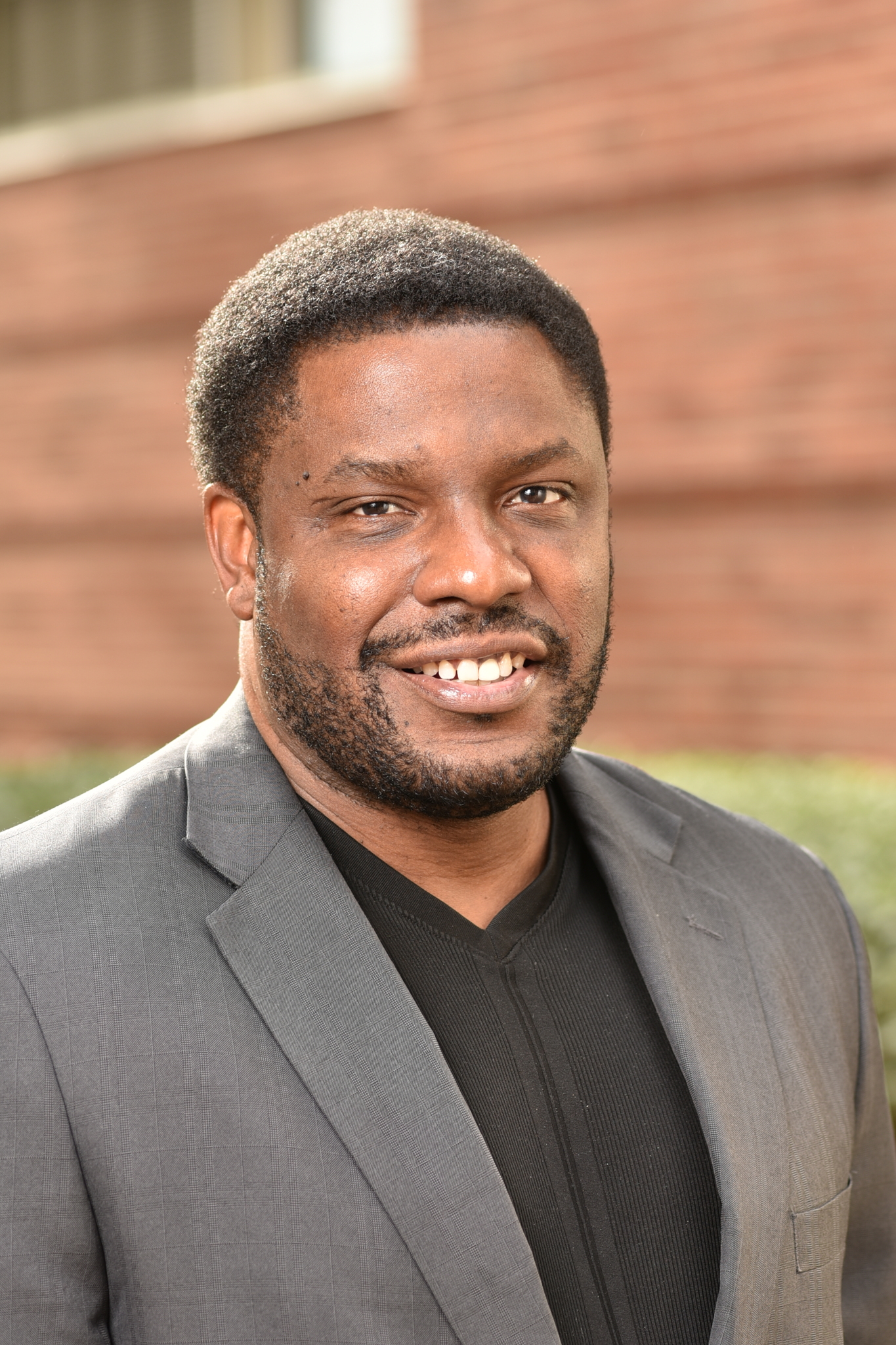
Email: ketema.paul@ucla.edu
Office: 1014 TLSB
Phone: (310) 794-7755
Website: https://uclapaullab.wixsite.com/ucla-paul-lab
Biography
After receiving a bachelor’s degree in biology from Howard University I went on to study neurobiology and circadian biology at Georgia State University in Atlanta, Georgia where I received my doctorate in 2003. I completed a postdoctoral fellowship at Northwestern University in Evanston Illinois in 2006 at the Center for Sleep and Circadian Biology under the guidance of Dr. Fred Turek, after which I accepted a faculty position at the Morehouse School of Medicine (MSM). I spent ten years at MSM and joined the faculty at UCLA in 2016.
Research Interests
My work examines the neural and genetic regulation of sleep regulatory mechanisms. My research program currently has three foci: 1) to examine sex differences in sleep regulatory mechanisms, 2) to investigate the role of circadian molecules on the ability to recover from sleep loss, and 3) to determine how genetic heterogeneity contributes to resilience against the negative effects of sleep loss. My lab has adopted a forward genetics approach in mice to uncover the core genes responsible for sleep-wake regulation and sleep homeostasis. Another avenue of interest in my lab is the circadian expression of sleep-regulatory genes in isolated peripheral blood mononuclear cells from patients with Alzheimer’s Disease. These studies are expected to identify novel sleep-regulatory genes and lead to the development of new therapeutic targets and improved treatments for sleep-related disorders.
Education
B.S., Biology, Howard University 1994
Ph.D., Biology, Georgia State University 2003
Selected Publications
Polyunsaturated Fatty Acids Mend Macrophage Transcriptome, Glycome, and Phenotype in the Patients with Neurodegenerative Diseases, Including Alzheimer’s Disease. J Alzheimers Dis. 2023; 91(1):245-261. Dover M, Moseley T, Biskaduros A, Paulchakrabarti M, Hwang SH, Hammock B, Choudhury B, Kaczor-Urbanowicz KE, Urbanowicz A, Morselli M, Dang J, Pellegrini M, Paul K, Bentolila LA, Fiala M. PMID: 36373322.
Non-rapid eye movement sleep determines resilience to social stress. Elife. 2022 09 23; 11. Bush BJ, Donnay C, Andrews EA, Lewis-Sanders D, Gray CL, Qiao Z, Brager AJ, Johnson H, Brewer HCS, Sood S, Saafir T, Benveniste M, Paul KN, Ehlen JC. PMID: 36149059; PMCID: PMC9586557.
Estrogen-sensitive medial preoptic area neurons coordinate torpor in mice. Nat Commun. 2020 12 11; 11(1):6378. Zhang Z, Reis FMCV, He Y, Park JW, DiVittorio JR, Sivakumar N, van Veen JE, Maesta-Pereira S, Shum M, Nichols I, Massa MG, Anderson S, Paul K, Liesa M, Ajijola OA, Xu Y, Adhikari A, Correa SM. PMID: 33311503; PMCID: PMC7732979.
Sleep loss mediates the effect of stress on nitrergic signaling in female mice. Neurosci Lett. 2021 01 01; 740:135362. Chiem E, Nichols I, Van C, Kori S, Paul K. PMID: 33166635.
Omega-3 Fatty Acids Increase Amyloid-β Immunity, Energy, and Circadian Rhythm for Cognitive Protection of Alzheimer’s Disease Patients Beyond Cholinesterase Inhibitors. J Alzheimers Dis. 2020; 75(3):993-1002. Fiala M, Lau YCC, Aghajani A, Bhargava S, Aminpour E, Kaczor-Urbanowicz KE, Mirzoyan H, Nichols I, Ko MW, Morselli M, Santana J, Dang J, Sayre J, Paul K, Pellegrini M. PMID: 32390637.
Muscle, a conduit to brain for hormonal control of behavior. Horm Behav. 2018 09; 105:58-65.Schlinger BA, Paul K, Monks DA. PMID: 30040953.
Ehlen, J.C., Brager, A.J., Baggs, J., Pinckney, L., Gray, C.L., Debruyne, J.P., Esser, K.A., Takahashi, J.S., Paul, K.N., “Bmal1 function in skeletal muscle regulates sleep”, eLife, 1-15 (2017) .
Clark, K.P., Ehlen, J.C., Paul, K.N., “Race and Gender Disparities in Sleep-Disordered Breathing”, Journal of Sleep Disorders: Treatment & Care, 6 (1): 1-4 (2017) .
Brager A.J., Heemstra, L., Bhambra, R., Ehlen, J.C., Esser, K., Paul, K.N., Novak, C. M., “Homeostatic effects of exercise and sleep on metabolic processes in mice with an overexpressed skeletal muscle clock”, Biochimie, 132 : 161-165 (2017) .
Brager, A.J., Yang, T., Ehlen, J.C., Simon, R.P., Meller, R., Paul, K.N., “Sleep is critical for remote preconditioning-induce neuroprotection”, Sleep, 39 : 2033-2040 (2016) .
Ehlen, J.C., Jones, K.A., Pinckney, L., Gray, C.L. Burette, S., Weinberg, R.J., Evans, J.A., Brager, A., Zylka, M.J., Paul, K.N., Philphot, B.D., Debruyne, J.P, “Maternal Ube3a loss disrupts sleep homeostasis but leaves circadian rhythmicity largely intact”, Sleep, 35 : 13587-13598 (2015) .
Evans, J.A., Suen, T-C., Calif, B., Mitchell, A., Castanon-Cervantes, O., Baker, K.M., Kloehn, I., Baba, K., Teubner, B.J.W., Ehlen, J.C., Paul, K.N., Bartness, T.J., Tosini, G., Leise, T.L., Davidson, A.J, “Shell neurons of the master circadian clock coordinate the phase of tissue clocks throughout the brain and body”, Sleep, 13 : 1-15 (2015) .
Jefferson, F., Ehlen, J.C., Williams, N.S., Paul, K.N, “A dopamine D2-receptor agonist attenuates the ability of stress to alter sleep in mice”, Sleep, 155 : 4411-4421 (2014) .
Ehlen, J.C., Jefferson, F. Brager, A.J., Benveniste, M., Paul, K.N., “Period-Amplitude Analysis Reveals Wake-Dependent Changes in the Electroencephalogram during Sleep Deprivation”, Sleep, 36 : 1723-1735 (2013) .
Brager, A.J., Ehlen, J.C., Castanon-Cervantes, O., Natarajan, D., Delisser, P., Davidson, A., Paul, K.N, “Sleep loss and inflammatory markers under chronic environmental circadian disruption”, Sleep, 8 : 1-8 (2013) .
Ehlen, J.C., Hesse S., Pinckney, L., Paul, K.N, “Sex chromosomes regulate nighttime sleep propensity during recovery from sleep loss”, Sleep, 8 : 1-6 (2013) .


